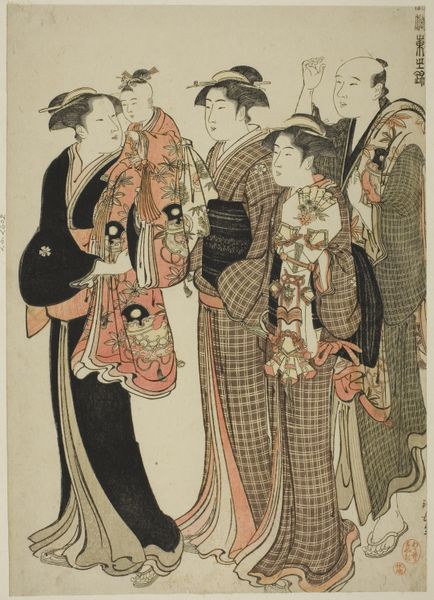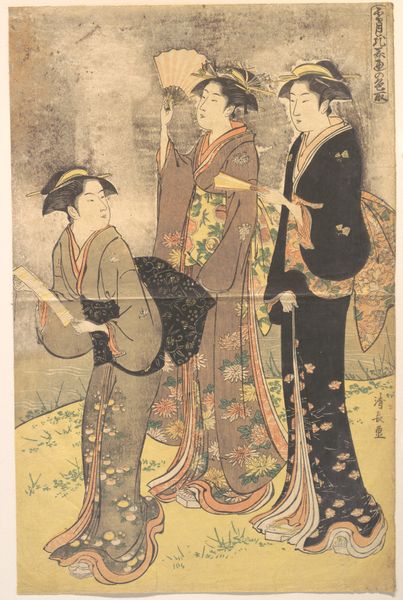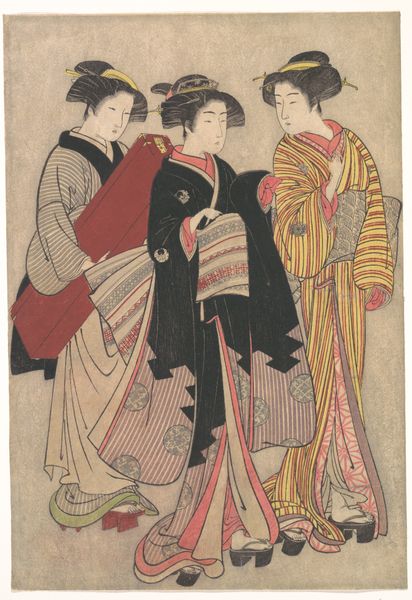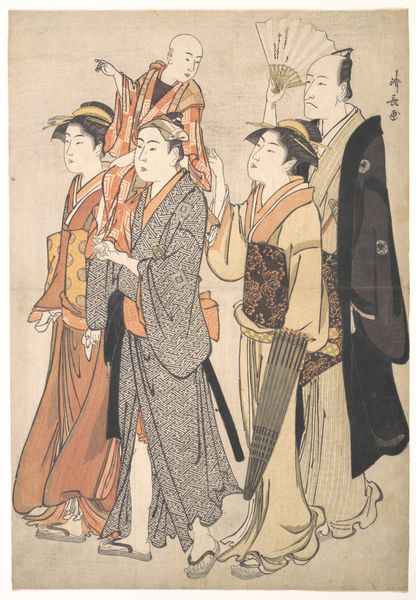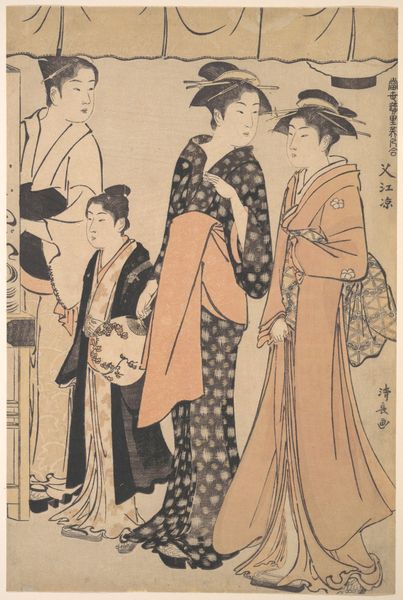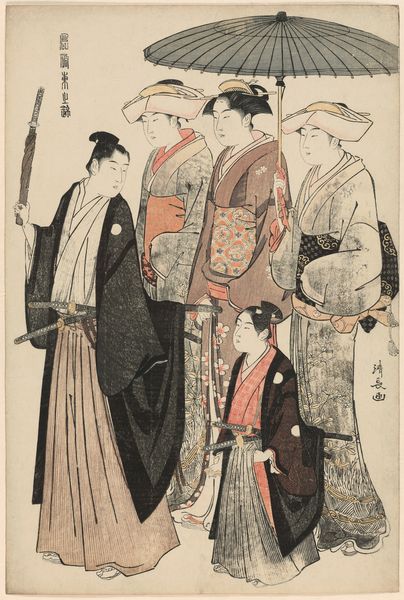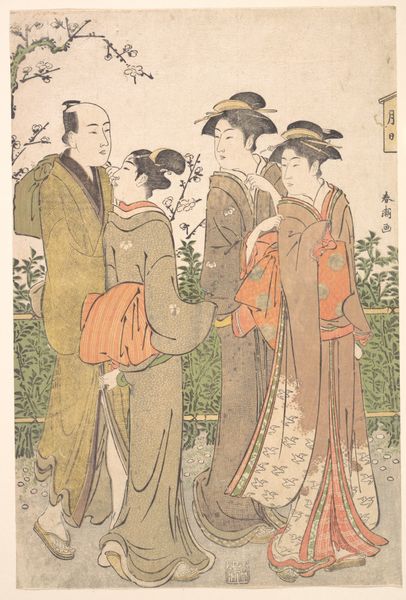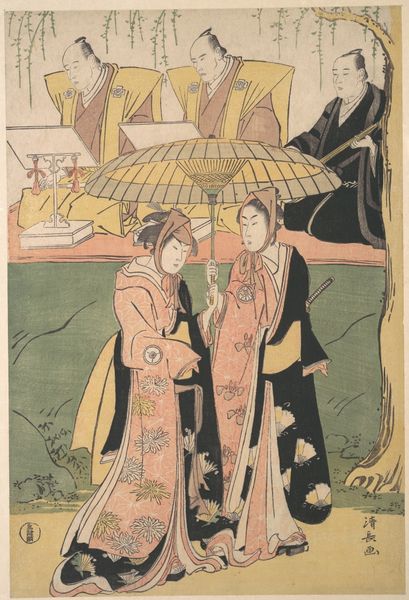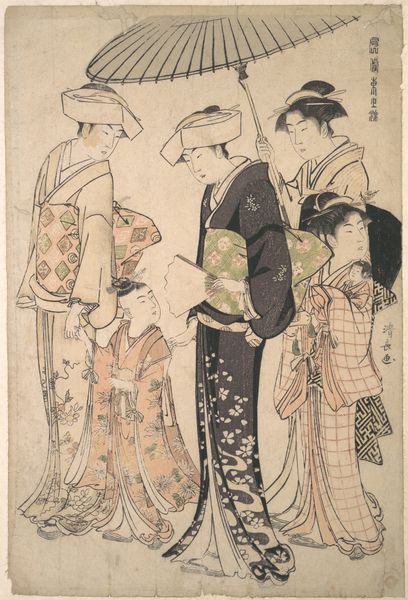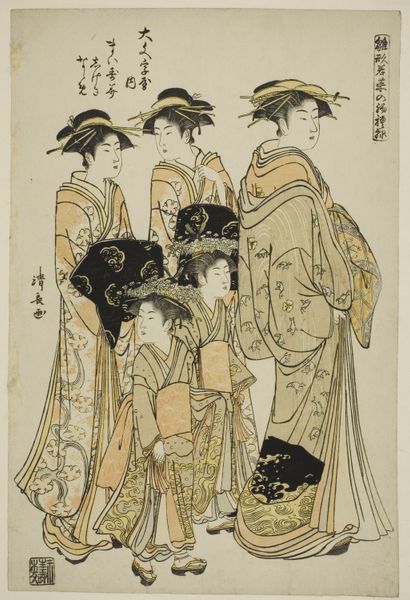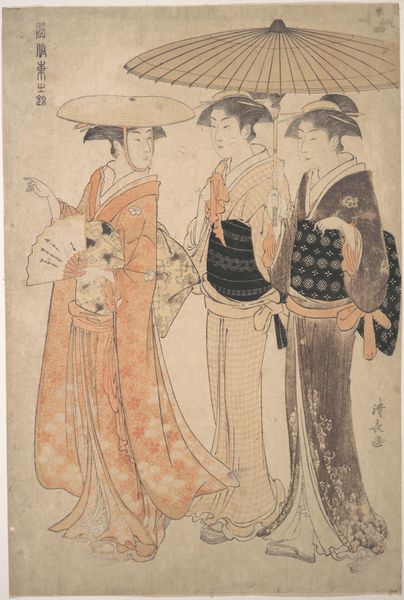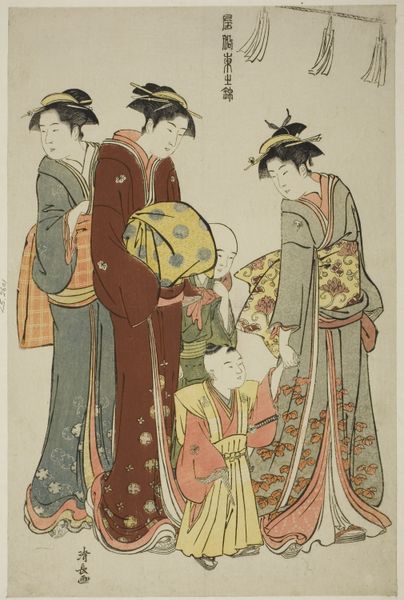
MotHer Carrying Her Baby Girl to the Miya Mairi 1774 - 1794
0:00
0:00
print, woodblock-print
#
portrait
#
girl
#
mother
# print
#
asian-art
#
ukiyo-e
#
woodblock-print
#
men
#
genre-painting
Dimensions: H. 14 1/4 in. (36.2 cm); W. 9 5/16 in. (23.7 cm)
Copyright: Public Domain
Curator: I’m immediately struck by the composition of this print—the figures dominate the space, and there’s something profoundly dignified in their stance. Editor: Indeed. What we're looking at is a woodblock print by Torii Kiyonaga, likely created between 1774 and 1794. It’s entitled "Mother Carrying Her Baby Girl to the Miya Mairi," and it currently resides at the Metropolitan Museum of Art. It represents an important social practice. Curator: A family pilgrimage, then? It is fascinating how he depicts women in this process. The gaze and the communal presence seem particularly relevant. It makes me think about the female gaze in artistic representation. Editor: Precisely. The Miya Mairi, typically thirty days after birth, involved formally introducing the newborn to the local shrine's deity, underscoring themes of belonging and societal expectations, also consider that Ukiyo-e prints themselves circulated in public, they reinforced societal values but at the same time became products consumed by a wide public. Curator: That consumption and the visibility of women… the way the artist renders clothing seems indicative of social status. The pattern detail… can we consider this form of artwork almost as social reportage of its time? How do the details reflect the lived experiences of women? Editor: Absolutely. The attire and hairstyles provide insight into contemporary fashion and social standing. More importantly, note how Kiyonaga chooses to depict this event and make it the centre of the picture. In effect he elevated an aspect of Japanese womanhood. Kiyonaga, like many artists of his period, had a workshop and often pieces like this one were produced collaboratively. That brings its own set of interesting aspects around the history and sociology of making an image like this. Curator: The absence of idealization is quite striking, they’re just, there. In a Western context, one might read in it a sense of everyday resistance and maybe a statement on feminine solidarity. I am interested to imagine how it might be received differently when decontextualized. Editor: Exactly. Placing this work within the social fabric of the Edo period provides an invaluable dimension to understanding not just its aesthetic qualities, but its inherent commentary. A deeper view can certainly be offered regarding gender, family, and religion that affect image reception through its journey as a museum piece and an image accessible today. Curator: A compelling example of art as a cultural and historical artifact, then. Editor: Precisely. One more lens through which to appreciate and understand art's multifaceted role.
Comments
No comments
Be the first to comment and join the conversation on the ultimate creative platform.
